Depreciation is one of the most overlooked but financially impactful aspects of vehicle ownership. While crossovers have become the go-to choice for many buyers, not all of them hold their value equally well.
In fact, some crossovers depreciate at a slower rate than their sedan counterparts, making them a smarter investment over the long term.
These vehicles typically benefit from widespread consumer demand, a strong reputation for reliability, and consistent resale market performance.
For buyers who want to minimize long-term losses, selecting a crossover that depreciates slower than a sedan can lead to substantial savings.
However, not all crossovers are created equal. Despite their popularity, some lose value just as quickly—or even faster—than sedans. These models may suffer from weak brand perception, quality concerns, or shifts in market preferences.
Owners of these crossovers often find themselves facing steep resale losses, especially when compared to more stable sedan options.
This article compares both ends of the spectrum: five crossovers that outperform sedans in value retention and five that fall short.
By examining real-world trends and vehicle-specific factors, we aim to guide buyers toward smarter purchasing decisions that align with long-term value and ownership satisfaction.
Also Read: 5 Vehicles That You Can Flip For Profit And 5 That Always Sell At A Loss
5 Crossovers That Depreciate Slower Than Sedans
In a world where vehicle depreciation can silently erode thousands of dollars from your investment, choosing the right type of vehicle matters more than ever.
Among the most resilient segments in the automotive world today are crossovers—particularly those that manage to depreciate at a slower rate than traditional sedans.
While sedans still serve a purpose and often offer better fuel economy and lower upfront costs, their resale values have been on a downward trajectory in recent years due to declining consumer interest. In contrast, select crossovers continue to enjoy strong demand in both the new and used markets.
The crossovers that resist depreciation the most tend to check several key boxes: they belong to brands with a reputation for reliability, they offer practical utility, and they benefit from broad market appeal across demographics.
These models not only satisfy daily driving needs but also meet lifestyle demands, making them a better long-term value proposition.
Their elevated driving position, improved cargo space, and all-weather capabilities contribute to a stronger resale value after several years of ownership.
This list focuses on five crossovers that outperform sedans when it comes to resale retention. Whether it’s due to brand strength, consumer demand, or exceptional engineering, these models have earned a reputation for holding their value longer than most sedans on the market.
Each vehicle profiled here has a proven track record of resisting steep depreciation, making them an ideal choice for buyers who prioritize long-term financial planning alongside utility and versatility.
We’ll examine what makes each of these crossovers a strong performer in the resale market, using real-world data and trends to show why they make better investments than many sedans.
If you’re in the market for a vehicle that holds value while delivering everyday practicality, these five crossovers deserve your attention.
1. Toyota RAV4
The Toyota RAV4 stands out as one of the most depreciation-resistant crossovers on the market today.
While sedans like the Toyota Camry or Honda Accord often lose 40–50% of their value over five years, the RAV4 routinely retains closer to 60–65% of its original value within the same timeframe.
This remarkable resale performance is no accident—it’s the result of Toyota’s well-earned reputation for reliability, along with the RAV4’s widespread appeal to a diverse group of buyers.
Part of what drives the RAV4’s strong value retention is its adaptability. It’s equally suited to young professionals, small families, and retirees. Buyers appreciate its balance of comfort, fuel economy, and cargo space, making it a consistent favorite in both new and used car markets.
Its standard suite of advanced safety features, known as Toyota Safety Sense, includes adaptive cruise control, lane departure alert, and automatic emergency braking—features that enhance both perceived and actual value.
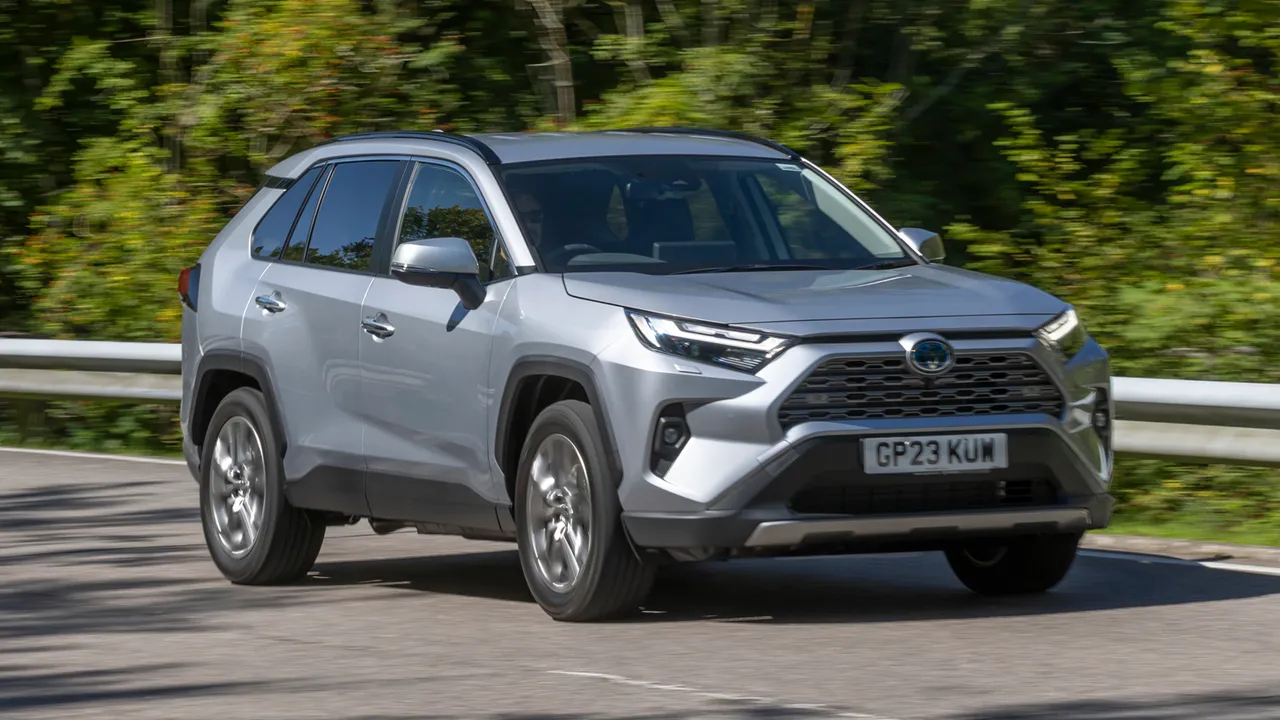
Another major contributor to its resilience is Toyota’s extensive dealer and service network. RAV4 owners benefit from lower long-term maintenance costs compared to many other brands, which adds confidence for future buyers looking for a used crossover.
Additionally, Toyota’s hybrid technology has become increasingly sought after, and the RAV4 Hybrid offers excellent fuel economy without sacrificing cargo space or comfort.
This variant, in particular, has gained strong resale value in a market that increasingly prioritizes fuel efficiency.
The RAV4 also tends to avoid the rapid styling changes that often plague resale values in other segments. A conservative but refined design helps keep older models from looking outdated too quickly.
The current fifth-generation model introduced in 2019 still looks modern and relevant, allowing it to command strong prices in the used market.
For anyone debating between a crossover and a similarly priced sedan, the RAV4 is a compelling case for choosing the former.
It offers dependable transportation, strong resale metrics, and the kind of all-around practicality that sedans increasingly struggle to match.
While no vehicle is immune to depreciation, the RAV4 minimizes that downside better than most, making it one of the smartest buys in the compact crossover segment.
2. Subaru Outback
The Subaru Outback is a perennial value-retention champ among midsize crossovers, consistently outperforming most sedans—and even many other SUVs—when it comes to long-term resale.
In fact, according to various automotive depreciation studies, the Outback holds around 60% of its value after five years of ownership, whereas most sedans in the same price range fall below 45% in the same timeframe. That difference can translate to thousands of dollars saved—or recouped—down the road.
What makes the Outback such a smart investment is its unique position in the market. It blends the comfort and efficiency of a wagon with the utility and ground clearance of an SUV.
This makes it an ideal option for buyers seeking capability without the bulk and inefficiency of a full-size SUV.
With standard all-wheel drive, 8.7 inches of ground clearance, and Subaru’s reputation for safety, the Outback offers a level of versatility that’s hard to find elsewhere, especially in sedans.
Another significant factor in the Outback’s strong resale value is Subaru’s brand loyalty. Subaru buyers tend to be fiercely loyal, and the Outback has become synonymous with the brand’s outdoorsy, adventure-ready image.
This niche identity translates to steady demand on the used market, where shoppers often seek out Outbacks specifically for road trips, light off-roading, and cold-weather driving.
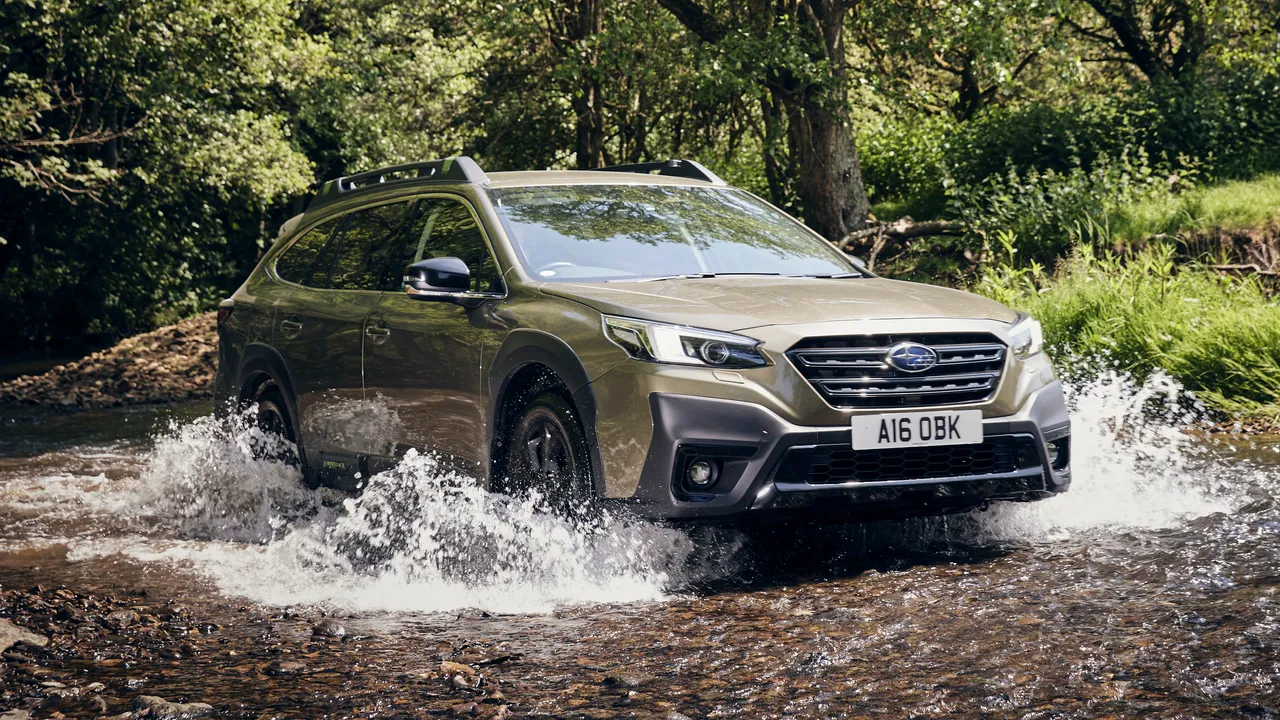
Subaru also equips the Outback with high-end safety features as standard, including its EyeSight driver assist system, which includes adaptive cruise control, lane centering, and pre-collision braking.
These features boost perceived value for used buyers and provide added assurance about long-term usability.
Additionally, the interior has been steadily refined in recent generations, offering larger touchscreens, better materials, and more premium options, which help older models age gracefully.
From a mechanical standpoint, the Outback is also a low-drama vehicle. While some earlier models had issues with head gaskets, recent generations have proven to be robust, especially when regularly maintained.
The introduction of the turbocharged XT models has also added a dose of performance appeal, broadening the vehicle’s market.
All of these elements—the rugged utility, brand reputation, standard AWD, and low depreciation—make the Subaru Outback a crossover that holds its value exceptionally well. It’s a savvy alternative to midsize sedans that often struggle to keep their worth.
3. Honda CR-V
The Honda CR-V has earned its place as one of the most dependable, best-selling crossovers in the U.S., and its resale value reflects that dominance.
Over a five-year ownership period, the CR-V typically retains around 60–63% of its original value—well above the industry average for compact crossovers, and significantly stronger than the 40–45% average for most midsize sedans. That makes it a particularly sound financial decision for anyone looking to avoid rapid depreciation.
One of the reasons the CR-V is so resilient on the used market is because of Honda’s bulletproof reputation for reliability. Buyers know that a well-maintained CR-V with 80,000 miles still has many years of service ahead, which bolsters confidence in the used market.
Additionally, the CR-V’s engineering prioritizes longevity and low ownership costs, with predictable maintenance intervals and accessible service parts.
Fuel efficiency is another major selling point. Even the non-hybrid models consistently return over 30 mpg in combined driving, and the newer CR-V Hybrid variants push that figure even higher.
This makes the CR-V not only practical from a resale standpoint but also budget-friendly during ownership—a win-win for cautious buyers. In comparison, similarly priced sedans with smaller cabins and lower ride heights often offer little additional efficiency benefit.
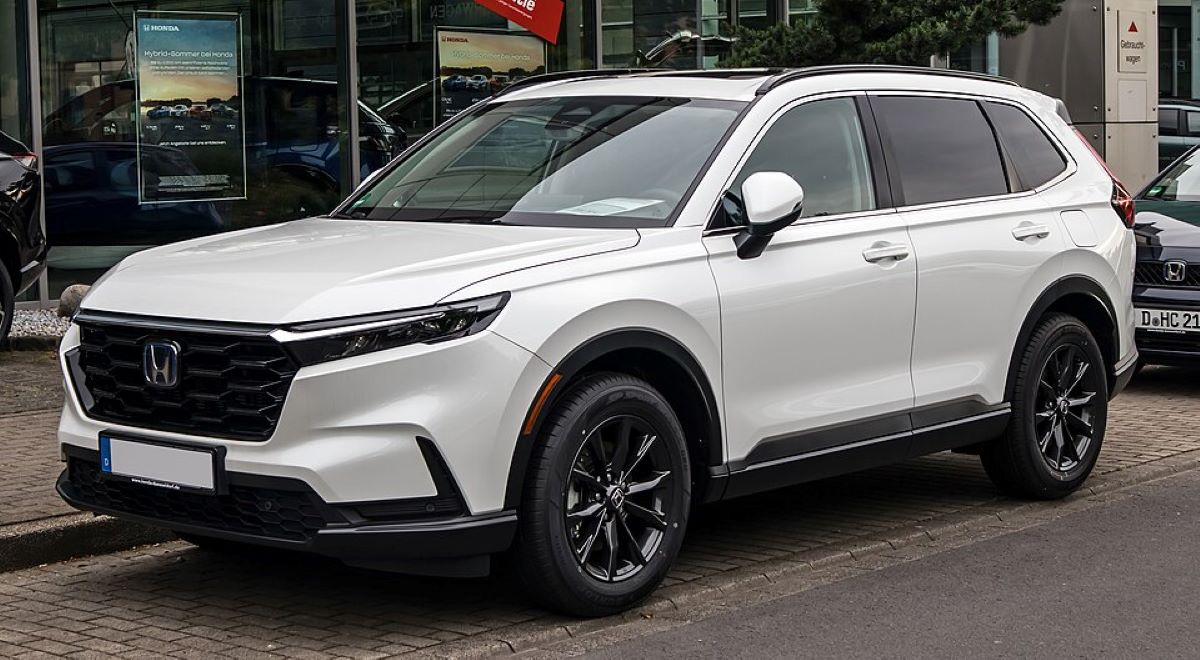
Interior practicality is another hallmark. The CR-V’s cabin is spacious, quiet, and versatile, with rear seats that fold nearly flat and a low load floor.
This gives it a leg up over sedans for family use, road trips, and cargo-hauling. It’s also one of the few crossovers in its class that can rival midsize sedans in ride comfort and rear legroom.
Safety technology and infotainment options in the CR-V have steadily improved over the years, making even older models appealing on the resale market.
Honda Sensing, the brand’s suite of driver aids, comes standard in newer models and includes adaptive cruise control, lane keeping assist, and collision mitigation braking—features increasingly expected by used vehicle buyers.
Ultimately, the CR-V’s strong resale value comes down to a mix of real-world reliability, sensible design, and widespread appeal.
While sedans struggle to maintain relevance in a world shifting toward crossovers, the CR-V thrives as a smart, futureproof alternative that rewards owners both during and after their ownership period.
4. Honda HR-V
The Honda HR-V may not be the flashiest crossover on the market, but when it comes to depreciation, it quietly outperforms many competitors — and especially most sedans.
With a retained value of roughly 58–62% after five years, the HR-V offers a rare blend of practicality, fuel efficiency, and long-term value that few small vehicles can match. Compared to similarly priced sedans that often drop below the 50% mark in five years, the HR-V stands tall.
One major reason for the HR-V’s strong resale value is Honda’s brand reputation for reliability.
The HR-V may share its underpinnings with the Civic, but its elevated ride height, more versatile cargo area, and standard features make it more appealing to a broader spectrum of used buyers — from college students to retirees and small families.
The HR-V’s “Magic Seat” system, especially in first-generation models, allows the rear seats to fold completely flat or flip up for taller items, giving it a versatility edge over many compact sedans.
This clever packaging means owners can transport bulkier gear without needing to size up to a larger SUV — a feature that remains attractive on the used market.
Additionally, the HR-V’s modest cost of ownership helps drive long-term appeal. It gets excellent fuel economy, has affordable insurance rates, and doesn’t require expensive parts or specialty servicing.
Many of the used HR-Vs on the market are owned by people who kept up with regular maintenance, making them attractive options for second and third owners.

In terms of design and features, the HR-V doesn’t try to be something it’s not. It offers a clean, modern look that ages well and includes essential tech features like Bluetooth, Apple CarPlay, and Honda Sensing in newer models.
These extras ensure that even five-year-old HR-Vs still feel relevant and usable — a critical factor in resale value.
Compared to sedans like the Toyota Corolla or Hyundai Elantra, which may suffer steeper value losses due to over-saturation in the used market, the HR-V benefits from being in higher demand. In regions where all-wheel drive is essential, the HR-V’s AWD trims are especially desirable.
For buyers looking for a crossover that keeps its value better than most sedans — without breaking the bank — the Honda HR-V delivers, quietly but confidently.
5. Subaru Crosstrek
The Subaru Crosstrek has become a standout in the compact crossover market, particularly for buyers who want ruggedness, versatility, and low long-term cost.
What makes the Crosstrek especially appealing in a resale conversation is its ability to hold value impressively over time—often retaining around 60% of its original value after five years.
That’s significantly better than the majority of sedans in the same price bracket, which often struggle to keep even 50% of their value beyond the five-year mark.
A major reason behind the Crosstrek’s resale strength is its loyal and growing fan base. Outdoor enthusiasts, urban drivers, and first-time buyers alike gravitate to its all-weather capability, efficient use of space, and standard all-wheel drive.
These qualities aren’t just marketing fluff—they translate directly into higher demand in the used market, especially in regions with harsh winters or mountainous terrain.
Another factor working in the Crosstrek’s favor is its reliability and simplicity. Subaru has crafted a reputation for building dependable vehicles that are relatively inexpensive to maintain.
Even with its all-wheel drive system, the Crosstrek has fewer costly maintenance surprises than many sedans or more complex crossovers. Buyers on the used market recognize this, and are willing to pay a premium for it.

Fuel economy is also a plus. The Crosstrek’s four-cylinder engines deliver respectable mpg figures for a vehicle with standard AWD, and the addition of a hybrid model in recent years has helped broaden its appeal.
Sedans may sometimes offer slightly better mpg on paper, but they lack the Crosstrek’s versatility, especially in rough weather or on off-road trails.
Design-wise, the Crosstrek’s higher ground clearance, compact footprint, and rugged styling keep it relevant longer than many sedans, which often become outdated quickly.
Subaru’s conservative approach to exterior styling also means that a five-year-old Crosstrek doesn’t look dramatically different from the latest model—a big factor in preserving resale value.
In summary, the Subaru Crosstrek is more than just a compact crossover—it’s a value-retaining asset. Its blend of rugged practicality, loyal following, and strong resale numbers place it well ahead of similarly priced sedans in terms of depreciation resistance.
5 Crossovers That Don’t Depreciate Well
Crossovers are often seen as the sweet spot between practicality and comfort, making them a hot ticket item in new car showrooms. Their elevated driving position, extra cargo space, and family-friendly features attract buyers in large numbers.
But just because a crossover is popular today doesn’t mean it will hold its value five years from now. In fact, several crossovers lose value faster than comparable sedans, contradicting the general perception that they’re a safer bet for resale.
Depreciation depends on many factors — reliability, maintenance costs, brand reputation, changes in design, and even how saturated a model is in the used market.
Some crossovers, despite strong sales when new, struggle on the secondhand market because they fall short in key areas.
These might include dated infotainment systems, poor reliability ratings, expensive repairs, or even just a lack of differentiation from fleet-heavy models.
Additionally, certain crossovers depreciate quickly due to their alignment with rental fleets or because they rely on heavy manufacturer incentives to move units off lots.
These discounts, while attractive for new buyers, have the side effect of dragging down future resale values. For example, a crossover that frequently sells with $5,000 discounts new may face stiff resistance when priced higher as a used vehicle — regardless of how well it performs.
This section focuses on five crossovers that, for a variety of reasons, see steep drops in value over time. Each of these models might seem like a good deal upfront but end up losing a substantial chunk of their MSRP within the first few years.
For buyers considering long-term ownership or hoping to eventually recoup some of their investment, these are crossovers to be cautious of.
Let’s take a closer look at the five worst offenders when it comes to crossover depreciation.
1. Fiat 500X
The Fiat 500X had every intention of capturing a piece of the rapidly growing subcompact crossover market when it launched in the U.S. as a stylish European alternative to the mainstream crowd.
Sharing a platform with the Jeep Renegade, the 500X attempted to blend Italian flair with practical SUV functionality.
However, its execution and long-term ownership proposition fell short — resulting in severe depreciation rates that often exceed 50% within just three years.
One of the key reasons for the Fiat 500X’s poor resale value is the brand’s reputation in the United States.
Fiat, which re-entered the U.S. market with high hopes in 2011, has struggled to build consumer trust due to widely reported reliability issues and a lack of a strong dealer network.
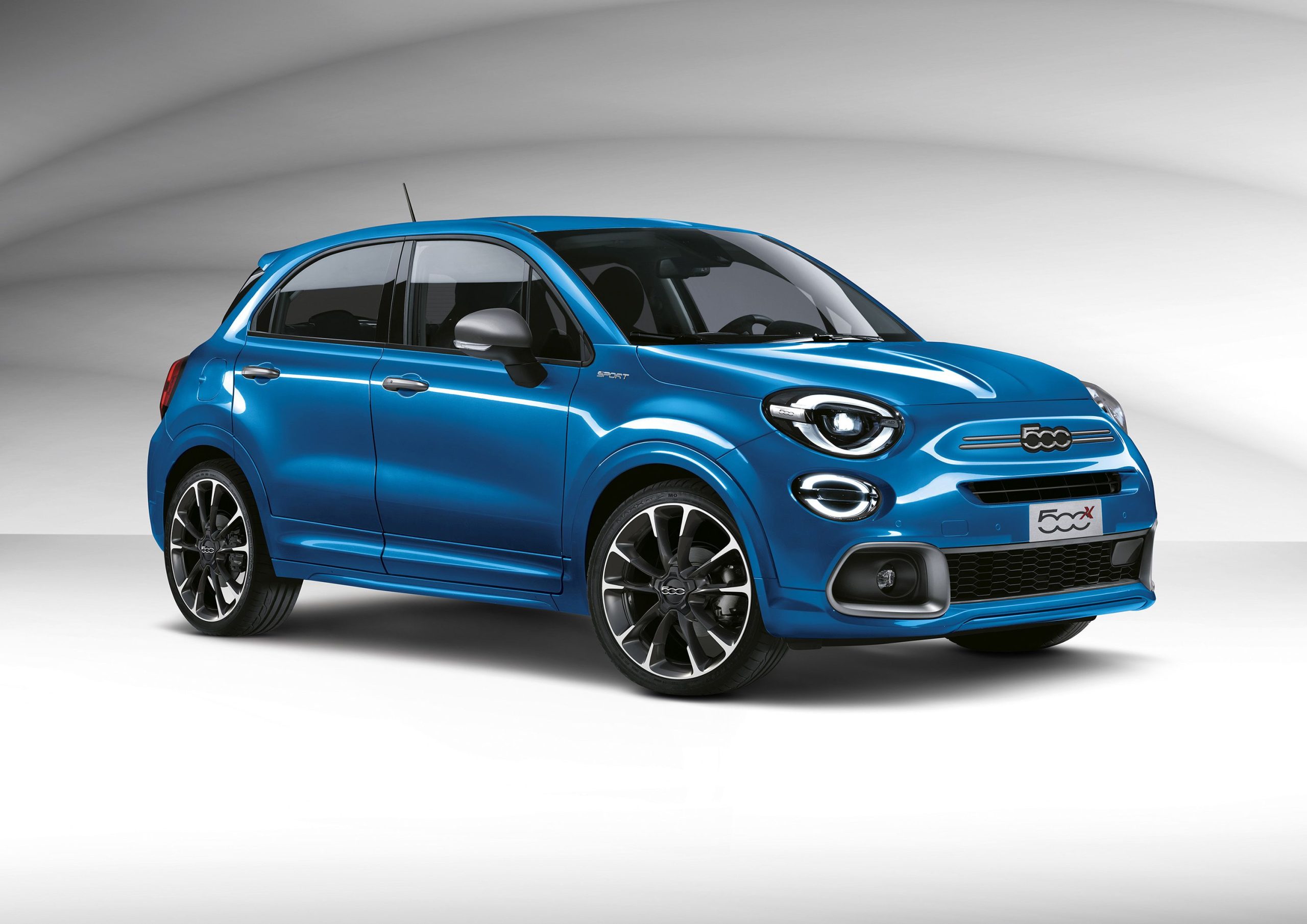
When owners face issues with their vehicles and can’t find a convenient or trustworthy service center, it affects word of mouth — and ultimately, resale value.
Mechanically, the 500X offers either a turbocharged engine or a naturally aspirated one, both paired with automatic transmissions that have seen mixed reviews.
Transmission complaints, turbo lag, and less-than-expected fuel economy (especially for a vehicle of its size) have made it a less attractive proposition on the used market. Buyers who might opt for similarly sized crossovers like the Honda HR-V or Mazda CX-30 tend to view the 500X as a riskier choice.
Another major factor in the 500X’s value collapse is limited brand awareness and demand. Even when offered with heavy discounts from new, used buyers rarely seek it out, pushing dealers to slash prices just to move inventory. A niche model with low demand and expensive parts is not a good recipe for long-term value.
Stylistically, the 500X’s design is polarizing. While some appreciate its quirky looks and European vibe, others find it too unconventional or impractical.
Interior quality is decent, but space in the rear seats and cargo area falls short of competitors — a critical flaw in a segment where versatility often trumps aesthetics.
Ultimately, despite its charisma and compact form, the Fiat 500X is a classic example of a crossover that doesn’t hold its value.
For budget-minded buyers, it might appear tempting on a used lot, but original owners looking to sell or trade in will likely be in for a disappointing return.
2. Chevrolet Trax
The Chevrolet Trax entered the compact crossover market with a competitive price point and a name recognized worldwide.
Despite its appeal as an entry-level crossover, the Trax has consistently suffered from steep depreciation, often losing over 55% of its value within five years.
This rapid drop can be attributed to a combination of factors related to market perception, reliability, and competition.
One major issue affecting the Trax’s resale value is its lackluster performance and driving dynamics. Under the hood, the Trax is powered by a small turbocharged 1.4-liter engine that produces modest power, often leaving drivers wanting more.
While fuel-efficient, this engine lacks the punch many buyers seek in this segment, making it less desirable on the used market when compared to rivals that offer more engaging driving experiences.
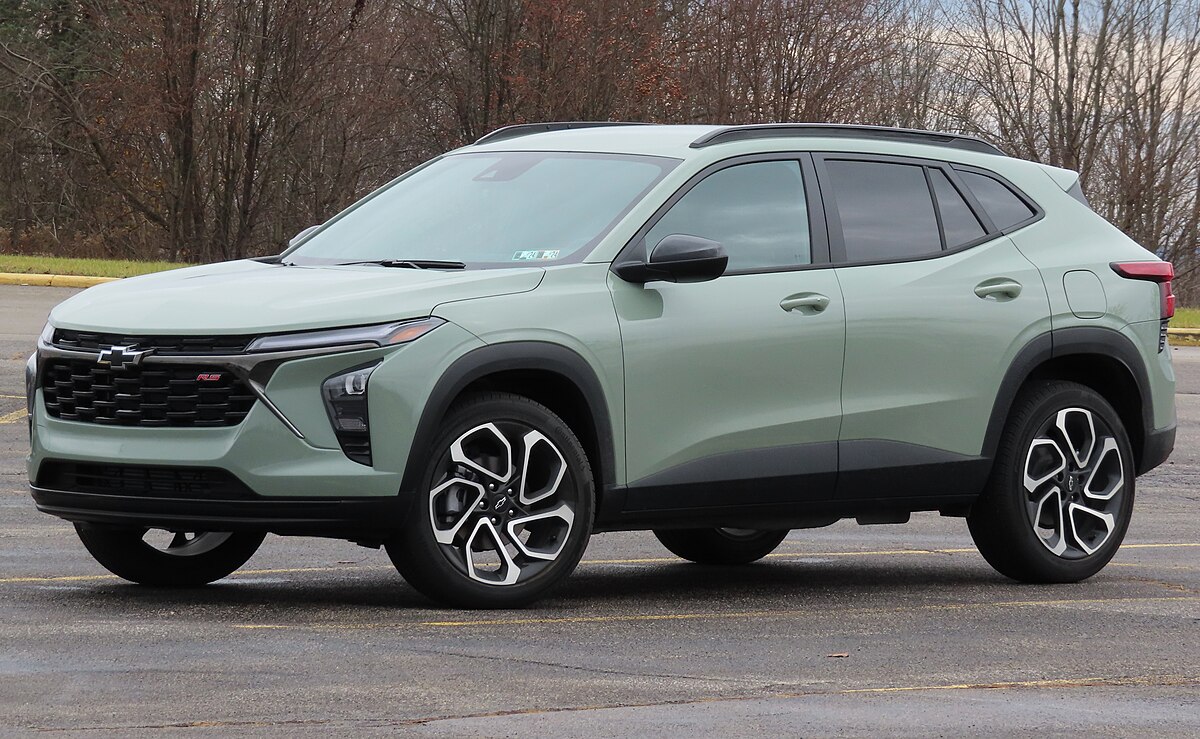
Reliability ratings for the Trax have also been inconsistent. Common complaints include transmission issues, electrical glitches, and subpar build quality.
These concerns, combined with a perception of Chevrolet’s compact crossovers as “budget” options, lead many potential buyers to shy away when considering a used Trax.
Furthermore, the Trax faces intense competition from more popular and better-reviewed crossovers such as the Honda HR-V, Mazda CX-3, and Subaru Crosstrek, which all boast stronger reliability and higher owner satisfaction. These competitors often command higher resale values, further pushing down the Trax’s price in the used market.
The interior and feature set of the Trax also contribute to its depreciation woes. Though modernized over the years, the cabin materials feel cheap, and the infotainment system lacks the polish and intuitiveness found in rivals. Rear passenger space and cargo capacity are modest at best, which is a crucial factor for buyers in this segment.
In addition, the Trax has been a common rental and fleet vehicle, which floods the used market with high-mileage units that sell at deep discounts. This over-saturation depresses prices and discourages private buyers.
While the Chevrolet Trax is an affordable and practical choice for those seeking a basic crossover, its steep depreciation and challenges in the used market make it a poor pick for buyers focused on retaining value over time.
3. Jeep Renegade
The Jeep Renegade brings iconic Jeep styling and off-road capability to the subcompact crossover segment, but despite its unique appeal, it struggles with steep depreciation that many owners find disappointing.
Typically, Renegades lose around 50-60% of their value within the first five years, which is higher than most competitors in the segment.
One of the primary reasons for the Renegade’s rapid depreciation is its mixed reliability record. While Jeep’s rugged image attracts buyers seeking adventure, the Renegade has been plagued by reports of transmission failures, electrical problems, and engine issues.
These reliability concerns scare off many potential used buyers who prefer more proven and dependable crossovers. In particular, early model years saw numerous warranty claims, which harmed consumer confidence.
Additionally, the Renegade’s fuel economy and performance do not stack up well against rivals. Its small turbocharged 1.3-liter engine and 2.4-liter four-cylinder provide decent power, but the Renegade is heavier and less refined than competitors like the Mazda CX-30 or Honda HR-V.
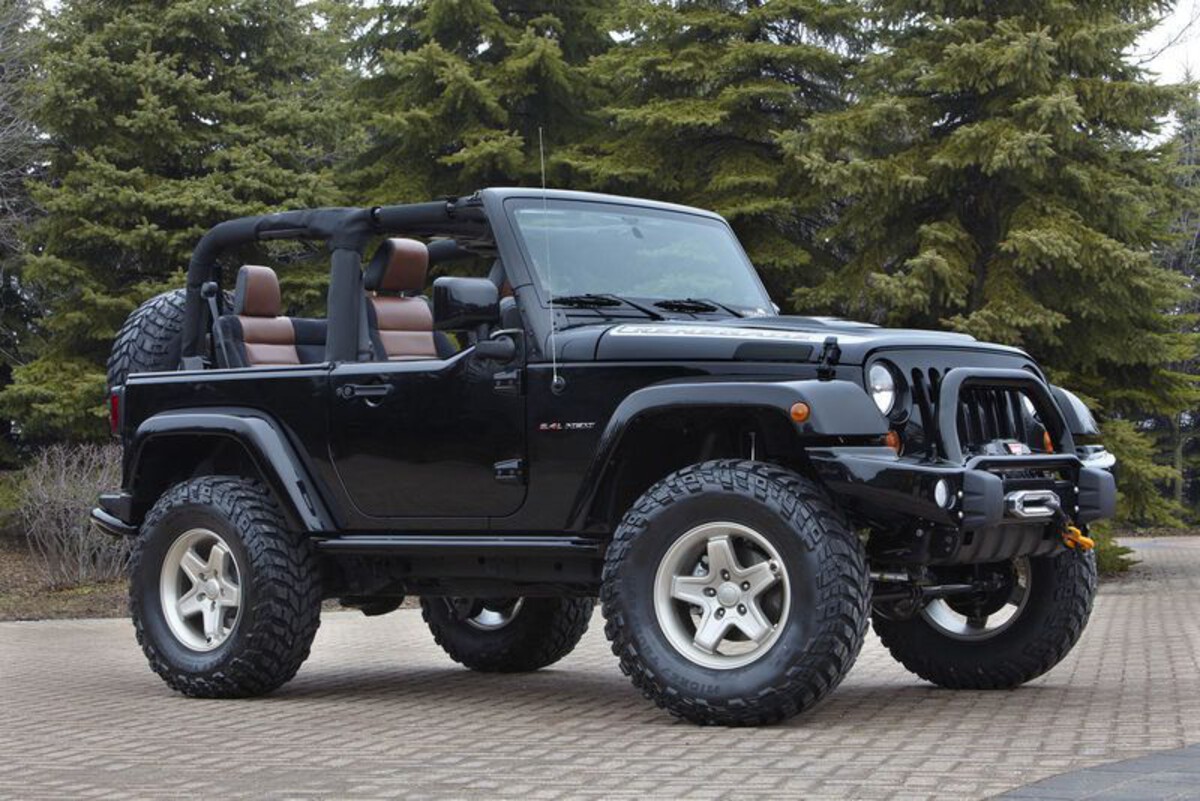
This results in lower fuel efficiency and a less engaging driving experience, making it less attractive for long-term ownership.
Another contributing factor is the Renegade’s cramped interior and cargo space, which many critics point out. Rear-seat legroom is tight, and the cargo hold is smaller than segment averages. For crossover buyers who prioritize versatility and space, this shortcoming can be a dealbreaker.
Brand perception also plays a role. While Jeep is a well-established brand known for rugged SUVs, the Renegade sometimes feels like a compromised vehicle — a blend of compact size with Jeep’s rugged image that doesn’t fully satisfy off-road enthusiasts or everyday drivers. This middle ground can alienate both groups, reducing demand in the used market.
Furthermore, the Renegade’s fleet and rental presence impacts its resale value. Many units enter the used market with higher mileage and less-than-ideal maintenance history, which drives prices down.
In summary, while the Jeep Renegade has an unmistakable style and some off-road chops, its higher-than-average depreciation reflects challenges with reliability, practicality, and market demand. Buyers looking to maximize resale value should consider alternatives in the subcompact crossover class.
4. Nissan Juke
The Nissan Juke burst onto the compact crossover scene with a bold, unconventional design that turned heads but also divided opinions.
While its quirky looks initially attracted buyers seeking something different, the Juke has not held its value well, often depreciating by more than 55% within five years. Several factors contribute to its poor resale performance.
First, the Juke’s polarizing styling limits its appeal to a niche market. Many potential buyers find the bulbous headlights and aggressive curves too eccentric for mainstream tastes, reducing demand in the used market.
While distinctive styling can sometimes preserve value, in the case of the Juke, it narrows the buyer pool and drives down resale prices.
Mechanically, the Juke is powered by a small turbocharged engine, delivering respectable power for its size but falling short in terms of refinement.
Ride quality and interior materials have been criticized for feeling cheap and less comfortable compared to rivals like the Honda HR-V and Mazda CX-3. This perception of lower quality discourages buyers looking for long-term ownership.
Reliability is another weak spot. Though generally average, the Juke has experienced issues with its continuously variable transmission (CVT) and electronic components, leading to higher repair costs and owner frustration. These problems contribute to a perception of higher ownership risk, pushing resale values down further.

Additionally, the Juke suffers from limited interior space and cargo capacity, which is a critical consideration for crossover shoppers. Rear passenger legroom is tight, and the cargo area is smaller than most competitors, making it less practical for families or those needing extra storage.
Market saturation also plays a role. The Juke was popular in some markets but remained a niche product in the U.S., with a relatively short production run. This means fewer buyers are familiar with it or actively seeking used models, leading dealers to discount prices to move inventory.
In summary, while the Nissan Juke’s daring design and compact footprint set it apart, its narrow appeal, modest reliability, and practical limitations contribute to steep depreciation. For buyers prioritizing value retention, more mainstream crossovers are usually a safer bet.
5. Ford EcoSport
The Ford EcoSport aimed to carve out a spot in the subcompact crossover segment by offering affordability and a distinctive style, but it has struggled with resale value, depreciating rapidly—often losing over 60% of its value within five years. Several factors explain why the EcoSport fails to hold its worth.
To start, the EcoSport’s performance and driving experience leave much to be desired. Its small 1.0-liter or 2.0-liter engines provide adequate power but lack the refinement and responsiveness of rivals like the Mazda CX-30 or Hyundai Kona.
The ride is often described as stiff and unsettled, with noisy cabin insulation, making daily driving less enjoyable. These driving dynamics put off many buyers looking for a comfortable, engaging crossover.
Reliability and build quality concerns further hurt the EcoSport’s standing. The model has faced reports of transmission issues, particularly with the PowerShift dual-clutch automatic, leading to expensive repairs and customer dissatisfaction.
Electrical glitches and premature wear of interior materials add to the perception that the EcoSport is a budget vehicle with questionable long-term durability.
Interior space and practicality are other areas where the EcoSport falls short. Although marketed as a crossover, its rear seat legroom and cargo space are limited compared to segment standards. For families or buyers requiring flexibility, this limitation reduces the appeal significantly.
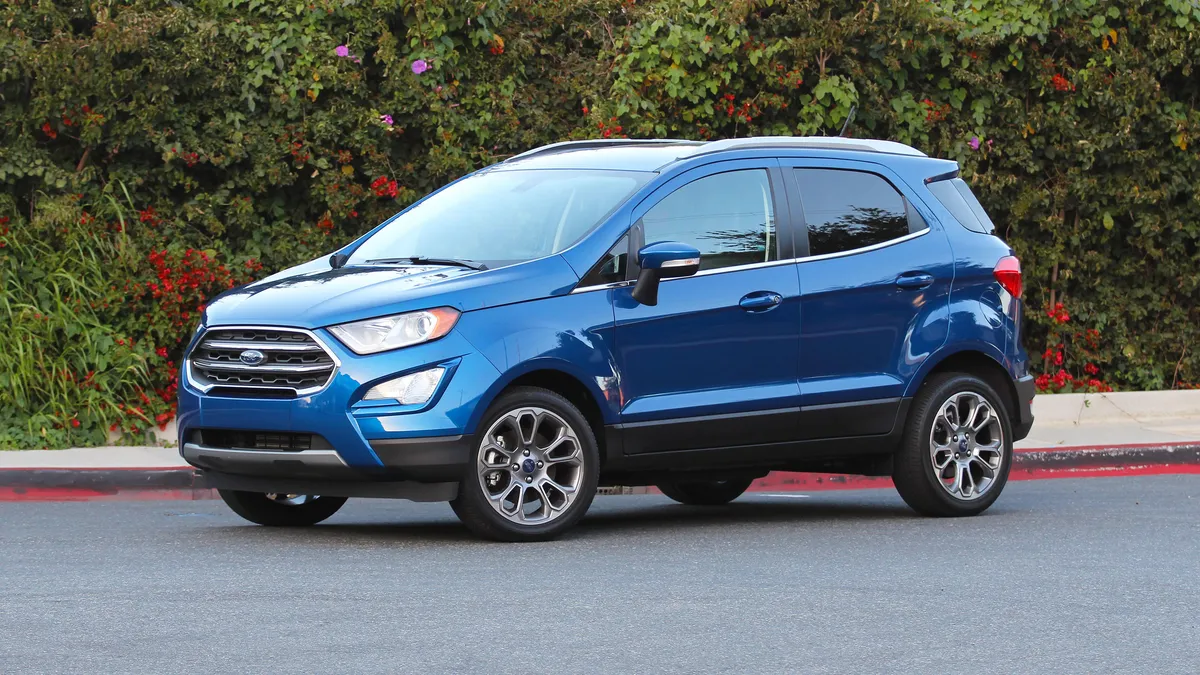
Another major issue is the EcoSport’s fleet and rental presence, which floods the used market with high-mileage examples sold at deep discounts. This oversupply depresses resale prices further, making it harder for private sellers and dealers to recoup their investment.
Lastly, Ford’s own marketing and model support for the EcoSport have been minimal compared to its other crossover offerings, such as the Escape or Bronco Sport, leaving it overshadowed and less desirable.
In summary, while the Ford EcoSport offers an affordable entry point into the crossover market, its poor driving experience, reliability concerns, limited space, and oversupply contribute to steep depreciation. Buyers focused on retaining vehicle value are better served by more reputable and well-rounded competitors.
Depreciation remains one of the most significant considerations when purchasing any vehicle, and the crossover segment is no exception.
As crossovers continue to dominate the market, understanding how their resale values stack up against sedans is vital for buyers seeking long-term value retention.
This analysis of five crossovers that depreciate slower than sedans alongside five that lose value quickly reveals a complex picture influenced by design, reliability, market trends, and consumer perception.
Crossovers that hold their value better tend to combine practical versatility with strong brand reputations, dependable mechanicals, and appealing styling that resonates with a broad range of buyers.
These vehicles often provide a balanced driving experience, quality interiors, and efficient fuel economies—traits that sustain demand in the used market.
The appeal of higher ride height and increased cargo capacity also contributes to their desirability, helping them outpace comparable sedans in resale.
On the other hand, crossovers with steep depreciation typically struggle due to factors such as lackluster performance, subpar interior quality, limited space, and reliability concerns. Some models are burdened by niche styling that alienates mainstream buyers or suffer from oversaturation in the used market, both of which drive down prices.
Additionally, vehicles with weaker brand recognition or poor marketing support often fail to retain consumer interest over time.
Ultimately, the choice between a sedan and crossover should consider not only personal needs but also long-term financial impact.
While sedans still hold appeal for certain drivers, many crossovers now offer competitive or superior resale value, making them attractive investments. However, careful research is essential to avoid models prone to rapid depreciation.
By selecting crossovers with proven value retention, buyers can enjoy the benefits of utility and comfort without sacrificing financial sense.
Conversely, steering clear of those that depreciate quickly helps protect equity and reduce ownership costs. Knowledge of these trends empowers smarter buying decisions in a dynamic automotive landscape.

